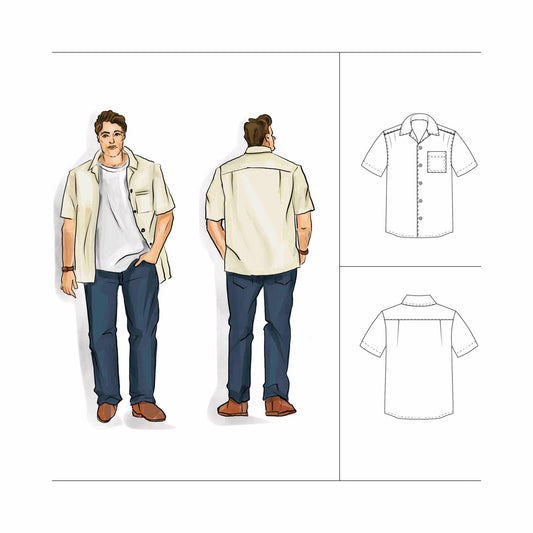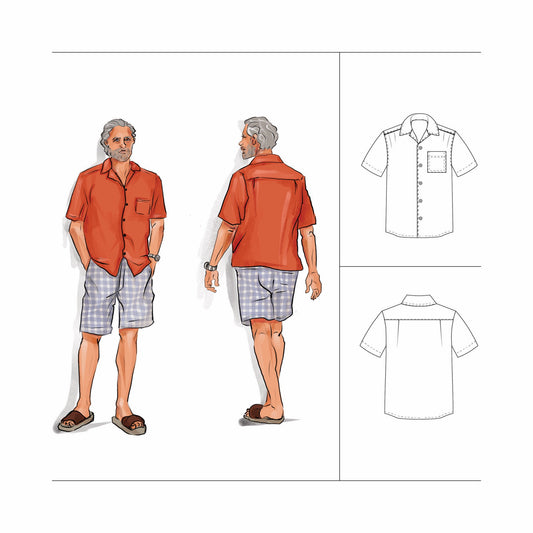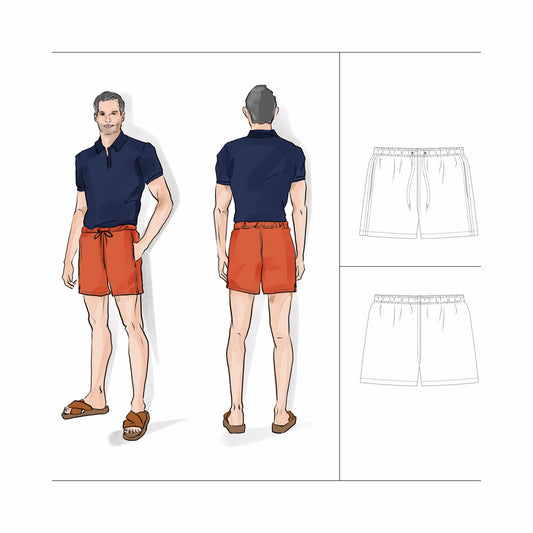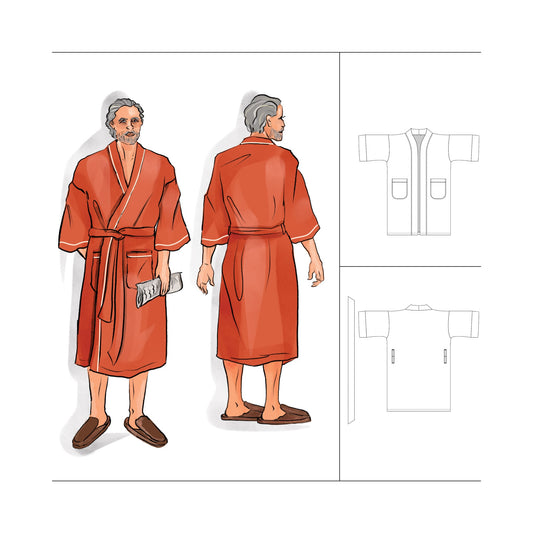Choosing colours for your sewing projects can feel overwhelming, especially when terms like colour type, colour scheme, and neutrals get thrown around.
In this blog, I’ll break down six key concepts that help you understand how colour works in relation to wardrobe planning. Whether you're sewing one garment or building a capsule wardrobe, this will make everything click into place.
Colour terms covered in this article:
- Colour Wheel
- Colour Type
- Colour Scheme
- Neutrals
- Colour Method Of Five
- 60-30-10 Rule

Before we dive into how to use colour when planning a wardrobe, let’s start with the basics and it all begins with the colour wheel.
1. Colour Wheel
- Primary colours: Red, yellow, blue — the starting point for all other colours.
- Secondary colours: Green, orange, purple — made by mixing two primary colours.
- Tertiary colours: Blends of primary and secondary colours (e.g., blue-green, red-orange).
- Helps you create colour combinations that feel balanced and intentional.
- Acts as a reference point for choosing colour schemes (like complementary or analogous colours).

2. Colour Type
Your Colour Type is a personalised colour profile that helps you choose fabric colours that naturally suit you. It’s about what brings out your best features.
When you know your colours you can take the current trends and adapt them to suit you.
In my Fabric Formula, Colour Type is based on four elements:
- Undertone – Whether your skin has warm, cool, or neutral undertones.
- Facial Contrast – The level of contrast between your skin, hair, and eyes.
- Facial Depth – How light or dark your overall colouring appears.
- Facial Chroma – Whether your features appear soft and muted or bright and shiny.
Using these elements, I help you fine-tune your ideal colour palette - one that’s flattering, intuitive, and practical for sewing.
Why it matters in sewing:
- It gives you a reliable filter for choosing fabric colours that you’ll actually want to wear.
- It prevents wasted time and money on colours that look better on the roll than they do on you.
- It builds confidence in your sewing choices and makes mixing and matching simpler. Your wardrobe goes further!
Side Note:
The Fabric Formula provides 11 Colour Types: including familiar seasonal types like Summer, Autumn, Winter, and Spring, but goes a step further to make colour planning practical, memorable, repeatable and useful for real-world fabric decisions.

Image Source: Pinterest - Camp Collar Shirt Inspiration
3. Colour Scheme
A Colour Scheme is a combination of colours chosen based on their relationship to each other on the colour wheel. It helps you create harmony, contrast and interest in a single garment or an entire wardrobe.
The 7 Main Colour Schemes:
- Monochromatic: One colour in varying shades, tones, or tints. Calm and minimal.
- Analogous: 2–3 colours next to each other on the wheel (e.g., blue, blue-green, green). Soft and cohesive.
- Complementary: Colours opposite each other on the wheel (e.g., red and green). High contrast and energetic.
- Split-Complementary: A base colour plus the two colours beside its opposite. Balanced contrast.
- Triadic: Three colours evenly spaced on the wheel (e.g., red, yellow, blue). Vibrant and balanced.
- Tetradic (Double Complementary): Two pairs of complementary colours forming a rectangle. Rich and complex.
- Square: Four colours evenly spaced around the wheel. Balanced but bold.
Why it matters in sewing:
- It helps you select fabrics that work together for coordinated outfits and capsule wardrobes.
- Different schemes suit different vibes or moods and their use completely depend on the individual's style, purpose and the season it is to be worn.
Tip: You don’t have to use all the colours at once — even choosing just two from a scheme to create an outfit can guide your fabric selection for a broader wardrobe. If you want help narrowing it down, try the How to Make a Capsule Wardrobe Moodboard. It’s a great starting point for visualising your ideal palette.


4. Neutrals
Neutrals are colours that aren’t found on the traditional colour wheel. They’re low in saturation and don’t compete for attention, which makes them incredibly versatile when pairing with other colours.
Common neutral colours:
- Black, white, grey
- Navy, beige, taupe, tan
- Cream, stone, charcoal
Why they matter in sewing:
- They anchor your wardrobe acting as a base for bolder or trend-based colours.
- Ideal for everyday staples (like trousers, jackets, shirts).
- Make it easier to mix and match garments, especially in a capsule wardrobe.
Important to know:
While neutrals are flexible, some still lean slightly warm (e.g. camel, ivory) or cool (e.g. slate grey, crisp white).
Choosing the right neutrals for your Colour Type ensures your base layers are just as flattering as your statement pieces.
Tip: Neutrals don’t have to be boring. Texture, weave, and fabric type can bring them to life without overpowering your outfit.
5. Colour Method (for Capsule Wardrobe)
When you're given a Colour Type, it often comes with a full palette of flattering colours, which can feel overwhelming. The Colour Method helps you narrow that down to a manageable five-colour selection, including your neutrals, making it easier to plan a wardrobe where everything works together.
One version I use is the 5-Colour Capsule Method.
Here’s how it works:
- 1 x Bold Colour – A statement shade that adds personality and contrast
- 1 x Complementary Colour – Balances the bold and adds variety
- 1 x Neutral – A versatile, grounding colour
- 1 x Dark Colour – Offers depth and structure
- 1 x Light Colour – Adds softness and brightness
Why it matters in sewing:
- Keeps your wardrobe cohesive while allowing for personal flair.
- Makes fabric shopping less overwhelming.
- Helps you sew garments that get worn — not just admired.

Image source: Pinterest - Jacket Inspiration
Tip: This method is flexible. You can swap out your bold or complementary colours each season, while keeping your light, dark, and neutral consistent for year-round wear.
In the below example the colours on the left could be his summer season colour combination. For the cooler months he could swap his bold, complimentary and dark colours out for more muted ones that suit the season while maintaining the soft blue and taupe (light and neutral respectively).

Image source: Pinterest - Jacket Inspiration
6. 60-30-10 Rule
The 60-30-10 Rule is a simple formula for how to balance colours in a single outfit or even within a garment, especially if you're colour-blocking. It gives your look structure and harmony without needing a designer’s eye.
The formula:
- 60% – Main colour (your outfit’s base or dominant tone)
- 30% – Secondary colour (adds interest or contrast)
- 10% – Accent colour (a pop that draws the eye)
Why it matters in sewing:
- Helps you plan colour-blocked garments or coordinated separates with ease.
- Gives your outfit a balanced, intentional feel.
- Makes your 5-colour capsule method even more wearable by guiding how much of each colour to use.
Tip: You don’t have to be exact, just aim for proportions. Think of a suit as the 60%, shirt as the 30%, and the tie as the 10%.
Final Thoughts
Sew becomes a whole lot more rewarding when you understand how colour works. In particular, how it works for you.
Knowing your personal Colour Type and to how to balance and combine your colours takes the guessing out of your fabric choices. It saves you time and money and heart ache.
You will be able to look at a piece of fabric in your stash and know exactly who it suits.
You make garments that will be worn for ever. Now that is good for the planet!
These six concepts give you a clear framework to guide your decisions. No more overwhelm. Let me know which one resonates with you most.
Understanding how to use your Colour Type with Colour Schemes and the 5 Colour Method in the right proportions you can create 8 outfits (undies not included) from 2 shirts, two shorts and a hat with ease.






